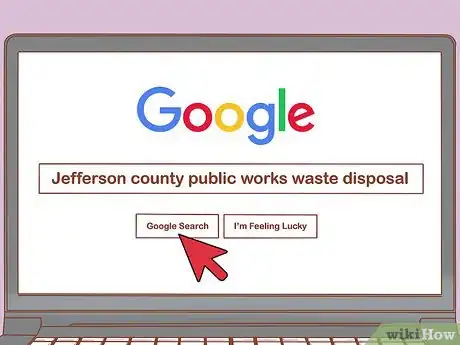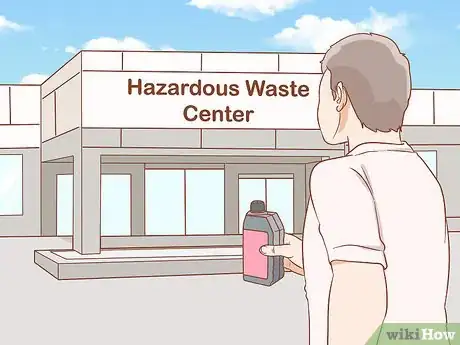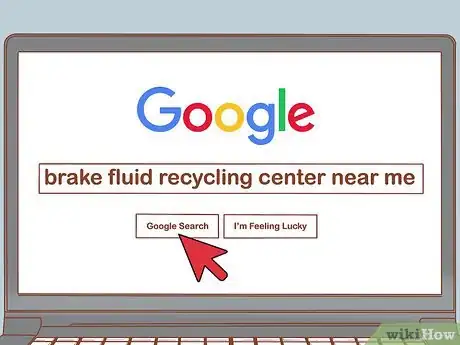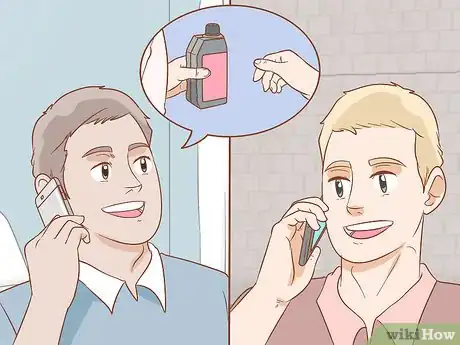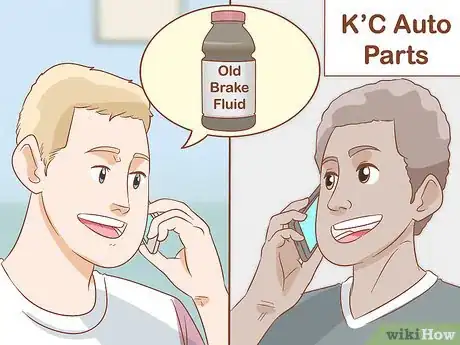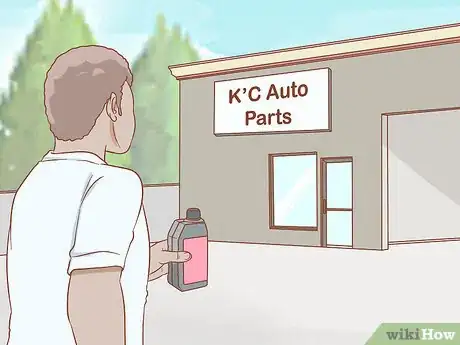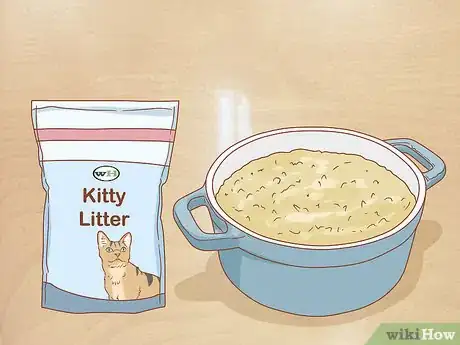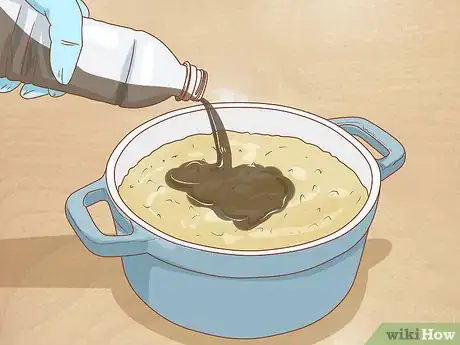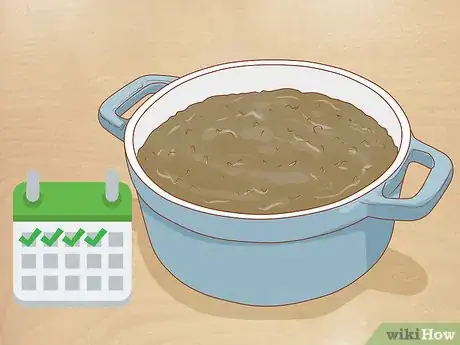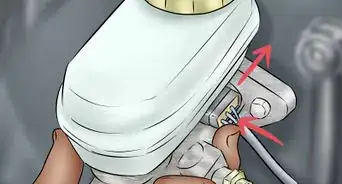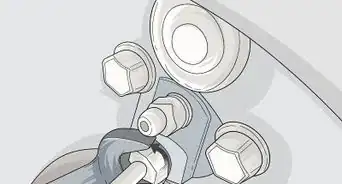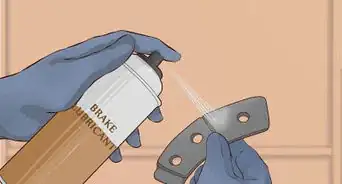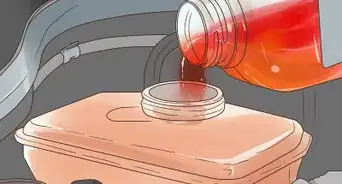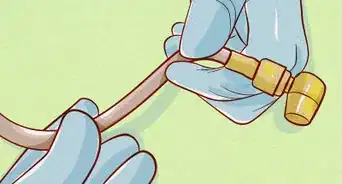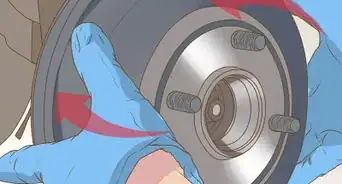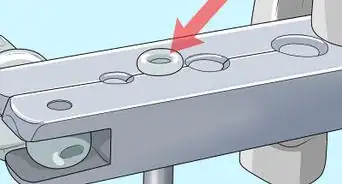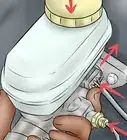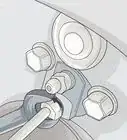This article was co-authored by Matthew Rava. Matthew Rava is an Auto Repair Expert and the Co-founder & Head of Marketing of Brakes to You. He specializes in auto repairs that concern brakes. Matthew earned a BS from West Chester University of Pennsylvania.
This article has been viewed 32,781 times.
Brake fluid is flammable and should never be poured out on the ground or dumped down a drain or toilet. Trash-pickup companies will also refuse to take it. However, most city and county governments have set up means by which you can safely dispose of your old brake fluid. In some cases, local recycling centers or auto supply stores may also have facilities which allow you to recycle the brake fluid. If the brake fluid is unused and expired, you can dispose of it by letting it evaporate from a pan of kitty litter.
Steps
Using a Public Waste Disposal Center
-
1Consult the website for your local department of public works. This is the government office generally responsible for hazardous waste disposal. Look on the department’s webpage for links having to do with hazardous waste materials or fluid disposal. Or, use the website’s search function to look for information about brake-fluid disposal.[1]
- For example, try searching for something like, “Jefferson county public works waste disposal.”
- If you live in England or Wales, you can input your postal code online to find a nearby hazardous-waste disposal facility. Find out more at: https://www.gov.uk/hazardous-waste-disposal.
-
2Call the public works department if their website isn’t informative. If the public works department’s website doesn’t provide any information regarding the disposal of brake fluid and other hazardous wastes, you’ll need to contact the department directly.[2] You should be able to find a phone number on the “Contact Us” page of department’s website.
- When you call, say something like, “Hi, I have some old brake fluid I need to dispose of. Does the country offer any drop-off locations?”
Advertisement -
3Take your brake fluid to the hazardous waste center. Waste centers typically do not offer any pickup services, so you’ll need to take the brake fluid to the waste center yourself. Take the brake fluid in a sealed plastic container so it won’t spill while in the car. Also be sure to find out the center’s hours of operation before you visit.[3]
- Some centers are open during business hours on weekdays, while others are only open 1-2 days each month.
-
4Pay the necessary waste-disposal fee. Fees will average around $15 USD, although large urban areas may charge more for brake-fluid disposal. Fees should be payable online or in-person through credit card or check.[4]
- In some cases, the drop-off may be free. However, centers which don’t charge for a drop-off will often ask for a donation, financial or otherwise. For example, they may request a food donation to a local homeless shelter.[5]
Recycling Brake Fluid
-
1Use online resources to find a waste recycling center near you. Many automotive fluids don’t need to be thrown away, but can be cleaned and re-used. If you’d like to take an environmentally aware approach to disposing of brake fluid, find a recycling center near your location. A variety of websites offer information regarding recycling centers. Try searching online for “brake fluid recycling center near me.”
- For example, the Earth911 website provides a locator page which uses your ZIP code to find the nearest recycling center. Find out more online at: https://earth911.com/recycling-guide/how-to-recycle-automotive-fluids/.
- You can also try using the Recycle Nation search function to find a center near you that will recycle brake fluid. Find out more at: https://recyclenation.com/find/.
-
2Ask the waste recycling center if they offer free collection events. In addition to accepting waste (like brake fluid) during their normal hours of operation, some waste recycling centers hold free waste collection events. These may be held monthly or annually. As their name suggests, you won’t need to pay a fee to drop off your brake fluid at these collection events.[6]
- You can find out this information by reviewing the collection center’s website or asking over the phone.
-
3Contact local auto parts stores if there are no nearby recycling centers. A number of well-known auto parts stores will recycle your brake fluid as long as it hasn’t been mixed with any other vehicle fluids. Try calling a local auto store, or check their website and see if they mention recycling automotive oil, antifreeze, and brake fluid. If you call, ask the auto parts stores whether or not they recycle brake-fluid over the phone.[7]
- Stores that typically recycle brake fluid include Firestone, AutoZone, and Tires Plus.
-
4Deliver the fluid to the center or auto store in an acceptable container. Most recycling locations will accept brake fluid in any plastic container with a sealable lid. However, some may require you to use special containers that seal once the brake fluid is inside. If so, you can pick up the recycling containers from the center or auto parts store.[8]
- If the recycling center or auto store doesn’t have information regarding acceptable containers listed online, try calling the store or center to find out.
Getting Rid of Unused Brake Fluid at Home
-
1Fill a pan with unused kitty litter. Find a large, flat-bottomed pan like a 9 in × 12 in (23 cm × 30 cm) baking sheet or casserole dish. Or, use a metal pan in your garage that you’d typically use for catching fluids when working on a vehicle. Cover the bottom of the pan with about 1⁄2 inch (1.3 cm) of kitty litter.[9]
- You can purchase kitty litter at any grocery store or pet-supply shop.
-
2Pour the brake fluid over the kitty litter. Leave the top of the pan uncovered. Be sure to set the pan in an area away from pets and children, since brake fluid is toxic when ingested.[10]
- Also be sure that the pan of brake fluid is away from any sources of heat or flame, since brake fluid is flammable.
-
3Let the fluid sit in the pan for 3-4 days. Brake fluid is an alcohol-based liquid and so will evaporate and be absorbed by the kitty litter over time. After 3 days have passed, lightly shake the pan to see if there’s still liquid in the bottom.[11]
- If some brake fluid remains, let the pan sit for another day.
-
4Throw out the kitty litter once the brake fluid is gone. You can simply pour the litter into a plastic garbage bag, seal the bag shut, and put it in a garbage can with the rest of your trash.[12]
- Only dispose of the litter once it’s completely dry.
References
- ↑ https://www.popularmechanics.com/cars/how-to/a329/2063646/
- ↑ https://www.popularmechanics.com/cars/how-to/a329/2063646/
- ↑ https://recyclenation.com/2015/06/how-to-recycle-brake-fluid/
- ↑ https://www.denvergov.org/content/denvergov/en/trash-and-recycling/recycling/recycling-directory-dropoff-locations.html#!rc-cpage=41096
- ↑ https://recyclenation.com/2015/06/how-to-recycle-brake-fluid/
- ↑ https://recyclenation.com/2015/06/how-to-recycle-brake-fluid/
- ↑ https://earth911.com/recycling-guide/how-to-recycle-automotive-fluids/
- ↑ https://earth911.com/recycling-guide/how-to-recycle-automotive-fluids/
- ↑ https://www.popularmechanics.com/cars/how-to/a329/2063646/
- ↑ https://www.popularmechanics.com/cars/how-to/a329/2063646/
- ↑ https://www.popularmechanics.com/cars/how-to/a329/2063646/
- ↑ https://recyclenation.com/2015/06/how-to-recycle-brake-fluid/
- ↑ https://www.popularmechanics.com/cars/how-to/a329/2063646/
- ↑ https://recyclenation.com/2015/06/how-to-recycle-brake-fluid/
